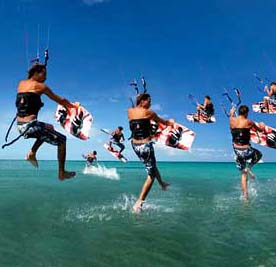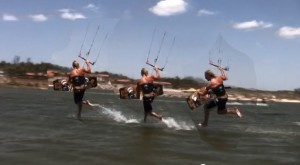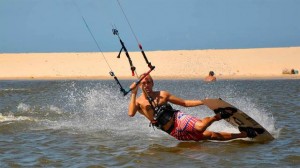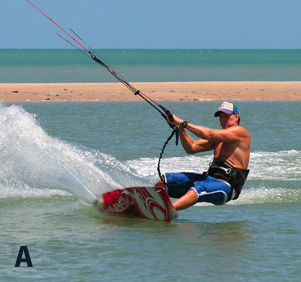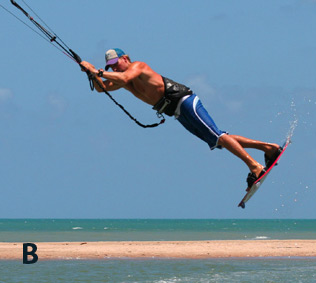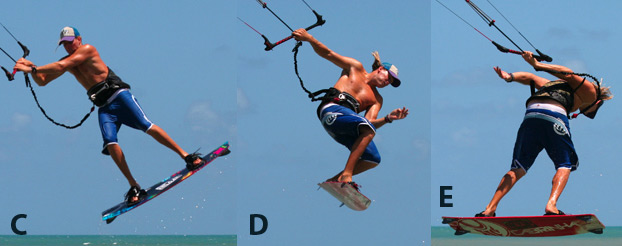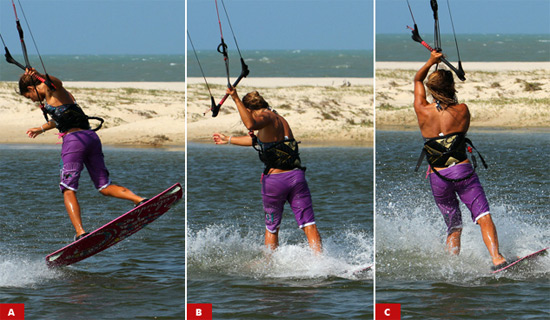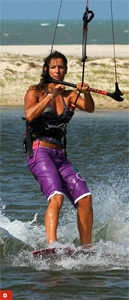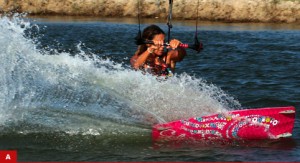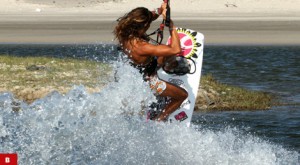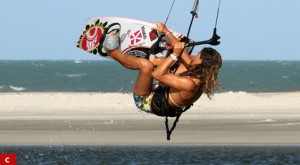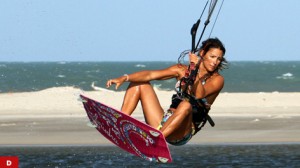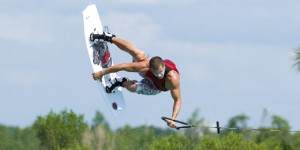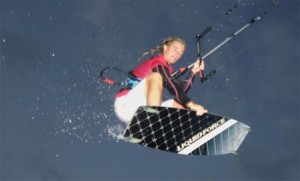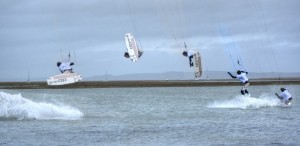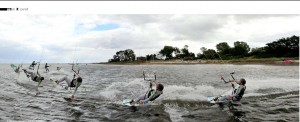Blind Judge

Simple but great and definitely one of the fundamentals that you have once nailed, this trick rewards you with a high percentage return rate. Blind Judge is an extension of the raley to blind because it needs accuracy, elevation, kite control and enough power. The Blind judge is an unhooked raley to blind but with an air pass rather than a surface pass.
Ironing out the blues
In preparation to the blind judge technique, you need to practice kite control, the take-off and the authentic raley. In all pass moves, kite control is vital. Too high will result to difficult pass, too low and it becomes too typical. Position yourself to get sufficient height and power to give you an enough forward momentum, so it will be a soft touch when you land the kite.
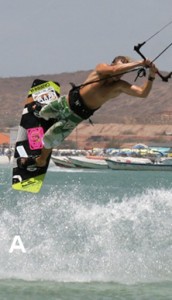 Pic A – We see the surfer is practicing for the Blind Judge. It’s pretty simple to see that it is not a raley. Position with both legs parallel to the water, but the surfer carved the board up into the wind and underneath, so it flicked around.
Pic A – We see the surfer is practicing for the Blind Judge. It’s pretty simple to see that it is not a raley. Position with both legs parallel to the water, but the surfer carved the board up into the wind and underneath, so it flicked around.
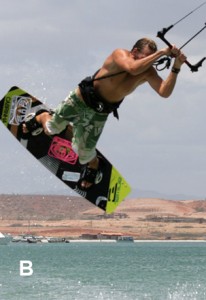 Pic B – The surfer paused in the raley just before passing. Let’s have a brief rationalization at the strong points of this position.
Pic B – The surfer paused in the raley just before passing. Let’s have a brief rationalization at the strong points of this position.
• Beginning with the feet, we can see that the front foot is high. This is the foot that needs to come through because of its height, it can keep up longer and will not drag the surfer away from the bar.
• The same goes with the front knee, just like the back knee in a shifty, this position can swing the surfer through with a swift power, and it will keep the surfer up plus it will come around the surfer’s body because of the high spacing.
• The surfer has pulled-in hard with both hands and tries to the head over the bar, so the force will move forward. It will be difficult if the kite is too high.
• Lastly, if we look at the hands and the bar, as a result to the surfer’s body position, it is already in a twisting position preparing where it will land and make the pass much easier.
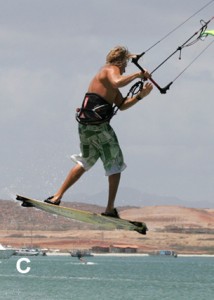 Pic C – Is the result of all the good work in the previous pictures. As the back hand has been released, the head is above the bar preventing to go too far even if the surfer drops. The front wrist and arm are twisting already, so that it will allow the surfer to spin early. The front knee has swung around and under the bar, giving the surfer the drive to turn all the way while bringing the body under the bar. Finishing point here is that if the kite is well positioned and not too low, the surfer can pinch down a bit to make the pass easier.
Pic C – Is the result of all the good work in the previous pictures. As the back hand has been released, the head is above the bar preventing to go too far even if the surfer drops. The front wrist and arm are twisting already, so that it will allow the surfer to spin early. The front knee has swung around and under the bar, giving the surfer the drive to turn all the way while bringing the body under the bar. Finishing point here is that if the kite is well positioned and not too low, the surfer can pinch down a bit to make the pass easier.
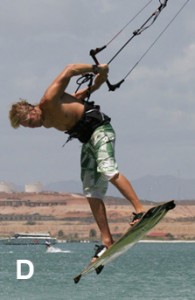 Pic D – The moment of truth! Firstly, releasing the back hand late is wise because it was nearer from the body and therefore it is not too far to grab the bar on the other side of the surfer.
Pic D – The moment of truth! Firstly, releasing the back hand late is wise because it was nearer from the body and therefore it is not too far to grab the bar on the other side of the surfer.
Secondly, because the surfer’s wrist, arm and bar were already twisting, the surfer has got the bar around and ready to grab quickly.
Thirdly, due to the emphasis on getting the head over the bar, the front leg of the surfer is high and swings the body under the bar.
Lastly is to hold on with your hand until the back hand can grab the bar. You need to rotate far enough to grab the bar behind you. And timing is the key to success in this move.
Step by Step Sequence (in Summary)
1. – With the kite around 1 o’clock combined with sufficient speed, the surfer has gone off to the wind unhooked and carves hard upwind, a full kite face and very straight front leg.
2. – As the board turns underneath, the surfer explodes up off his rear leg and allows the shoulders and bar to turn with the legs.
3. – A moment after the take-off, the surfer is in full momentum upwind, stretched out and ready to swing everything through.
4. – After gaining the elevation, the surfer starts the rotation to blind, pulls hard with both hands and aims to pull them all the way to the right buttock. At the same time, the surfer pulls the right leg up aiming to bring the knee up to the hands.
5. – As the body swings towards the kite, the surfer pulls his head up over the bar and started to twist the bar and turn his body into the rotation. Keep both hands on the bar always.
6. –Release the back hand and turn the head down around.
7. – With the bar already set and waiting, the surfer reaches behind the back and grabs the bar with the other free hand.
8. – As you drop, in order to put weight over the feet, go with your old front hand and lift your head.
9. – The surfer will land and ready to absorb the impact with both legs. Once the surfer is stable, a slide back to heel side move is easy, carve around to heel side, pop back to heel side or rid out toe side. If you really want to show off, then go for the pop to wrapped from toe side!
Important Reminders
1. Carve long upwind
2. Body, chest and bar upwind
3. Pull with both hands down the buttocks
4. Turn head before releasing back hand
5. Hold on tight

